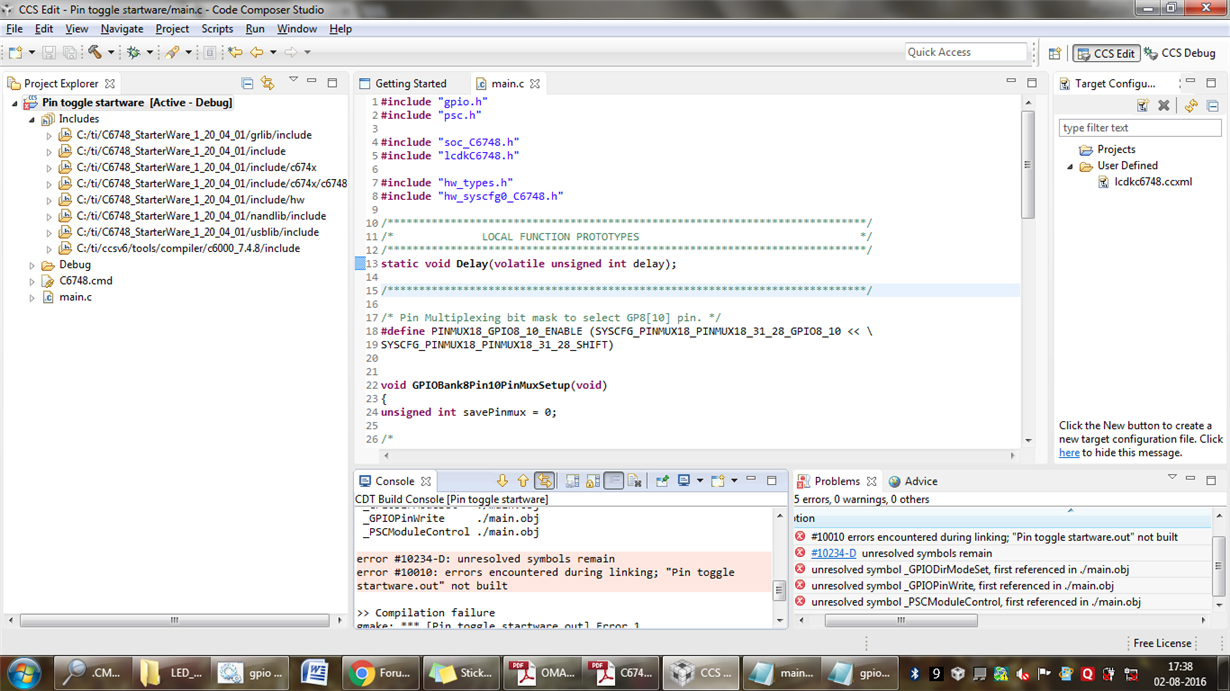Hello,
I am writing a program for generating a square wave using TMS320LCDKC6748 DSP processor's GPIO.
Could you please help in memory mapping of GPIO and all support files and directories needed to be added.
Please also let me know if any setting regarding memory allocation needs to be done.
Additional info: Windows 7 64-bit, Service Pack 1, Code Composer Studio Version: 6.0.1.00040
Thanks,
Onkar



